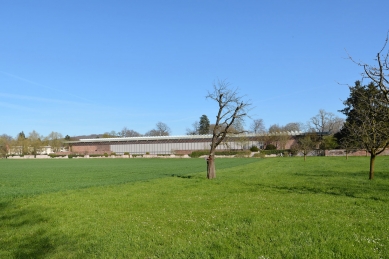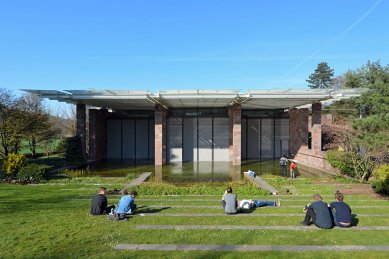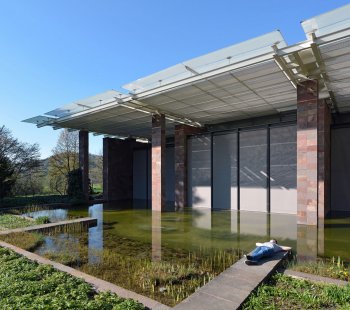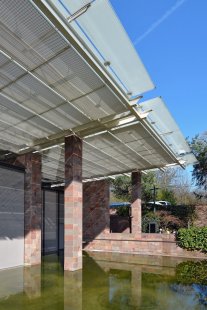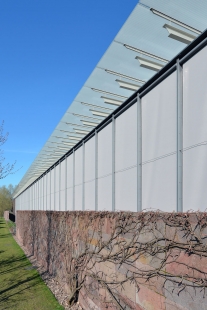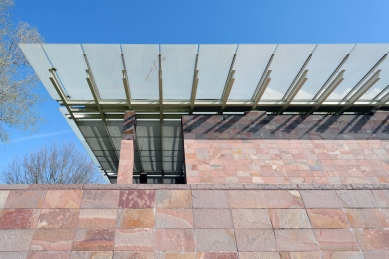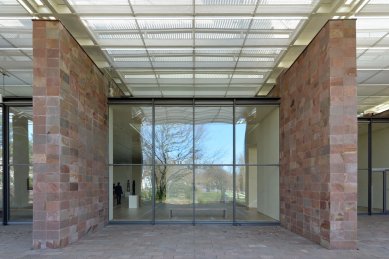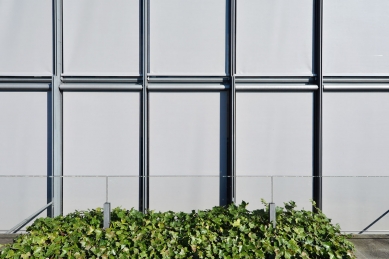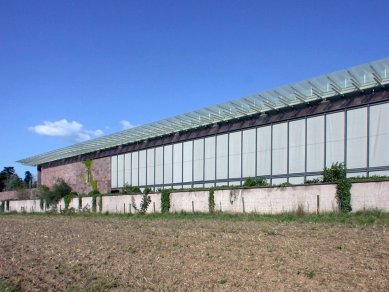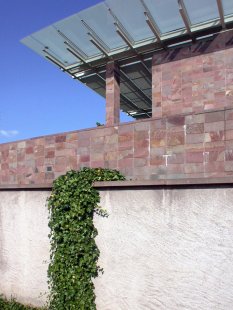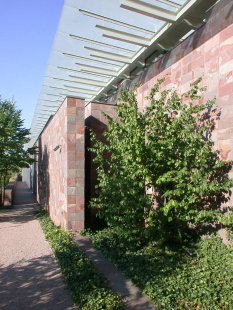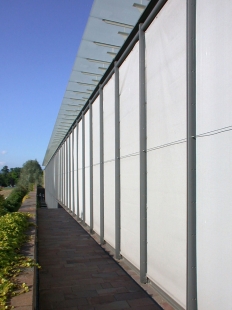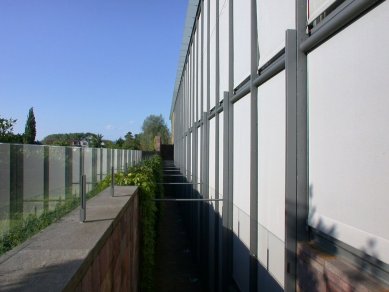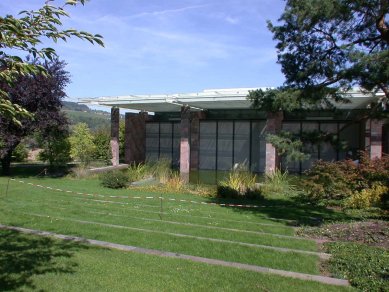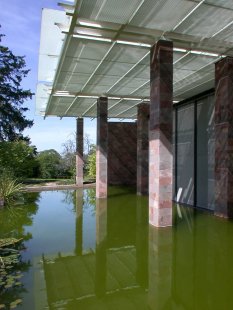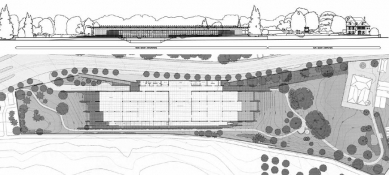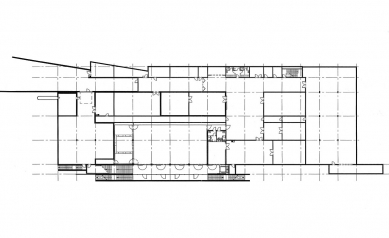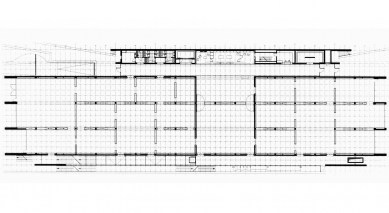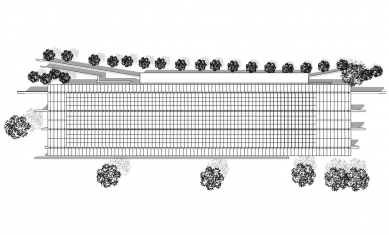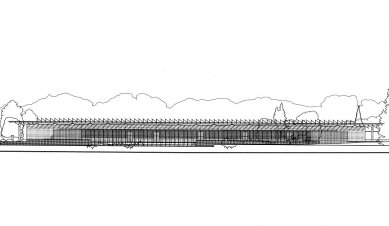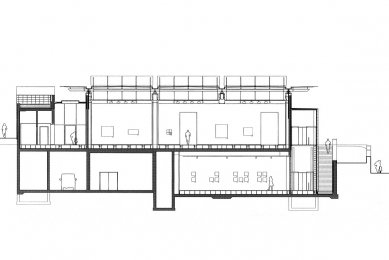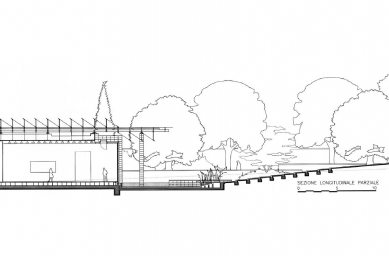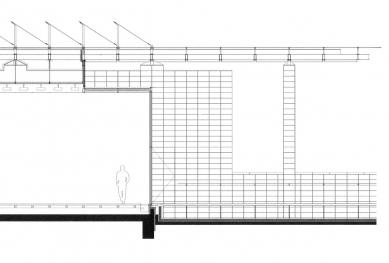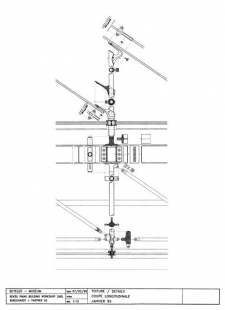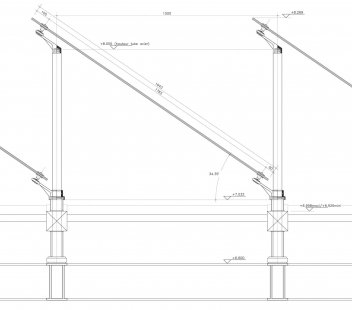
Beyeler Foundation Museum

 |
The Beyeler Foundation Gallery is located in Riehen on the remote outskirts of Basel, Switzerland. From the outside, the 130-meter-long building, protected from surrounding noise by a wall of Argentine porphyry, which is redder than the usual local sandstone, resembles a ship anchored along a busy street. Behind the entrance gate, you find yourself in the tranquility of an English-style landscape park, formerly the private grounds of the 19th-century Berower villa.
To the right, amidst a cluster of trees, stands a pavilion made of stone, white-painted steel, and glass. Its glass roof, covering an area of about 4000 m², seems to hover above four parallel walls. The archaic character of the walls integrates them into the topography like remnants of a forgotten installation, while the museum's roof, on the contrary, places the building in modern architectural contemporaneity. Toward the street, the roof juts out above the wall like a suggestive, striking wavy cornice, transforming around the descending entrance into an unusually narrow, protruding canopy. Here, the walls seem to part, allowing the roof to extend freely. It consists of several densely textured steel beams firmly connected within the structural matrix of the ceiling. Its sophisticated technology of 864 sun slats allows for optimal natural light for the needs of the gallery.
"Natural light, often diffused from above, constantly plays a main role in my work. Light has not only intensity but also a vibration that can roughen smooth material and give 3D quality to flat space." R.Piano
 |
The northern and southern façades made of smoked glass and the eastern side glazed for its entire 100-meter length connect the exterior with the interior, nature with art. Inside the museum, the reddish hue of the porphyry walls transitions into a homogeneous white surface. This is represented, in fact, by vertical, sandwich-layered planes of plasterboard, which house the building's services.
Moving through Piano's gallery is a sensory experience. You progress across the oak floor seamlessly from one room to another. The natural light is perfect, vibrant, yet not overly invasive. The interior is bright, based on views.
What really impressed me was the elevator, which allows access to occasional exhibitions on the lower floor. The piston quietly glides the platform between the floors. That's perhaps the only material thing you could feel from it. The glass cladding seemed nonexistent. A construction perfect in detail.
How did Piano describe his task?
"The museum should interpret the quality of the collection and define its relationship with the surrounding world. That means having an active, not aggressive role."
The English translation is powered by AI tool. Switch to Czech to view the original text source.
0 comments
add comment



